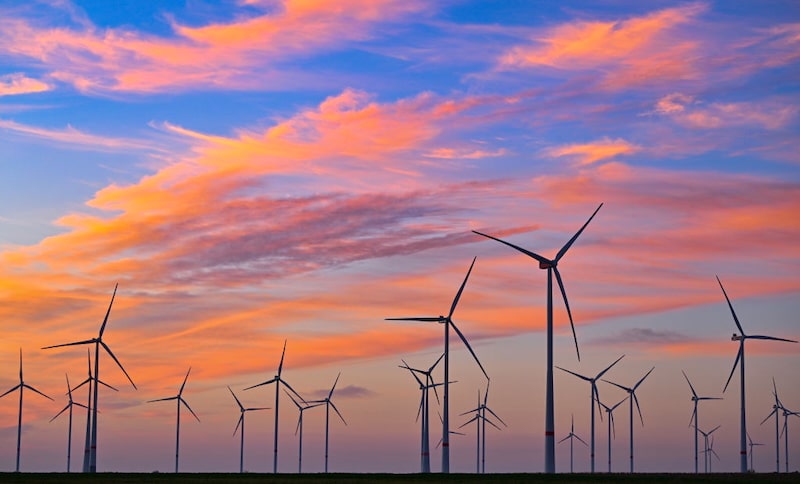This post was originally published on Eco Watch
Renewables are now making up a majority of the net public electricity generation in Germany, according to a new report by the Fraunhofer Institute for Solar Energy Systems (Fraunhofer ISE).
As Fraunhofer ISE reported, renewable energy sources accounted for 62.7% of the net public electricity generated in Germany in 2024. Wind energy made up the most of this share, comprising 33% of net public electricity generation at 136.4 terawatt hours (TWh). While onshore wind energy declined slightly, offshore wind power increased to 25.7 TWh compared to 2023’s 23.5 TWh.
Meanwhile, solar power in Germany reached a new record of 72.2 TWh in 2024 and exceeded the country’s photovoltaic target to install 13 gigawatts (GW) of solar for 2024, with 13.3 GW installed by November 2024 and an estimated 15.9 GW installed by the end of the year.
Total solar power production increased by 18% compared to 2023, and solar energy made up 14% of the total net public electricity generation, according to Fraunhofer ISE.
Solar expansion and production increased rapidly last year, despite weather conditions that were often not ideal for solar power generation, PV Magazine reported. While Germany experienced its hottest year on record, as Yahoo! reported, the country experienced heavy rainfall and thunderstorms in July, which was also the month with the most solar energy production of 2024. Heavy rain and storms continued into the fall.
In addition to rising renewables, reliance on hard coal and lignite for public electricity generation declined by 27.6% and 8.4%, respectively. Lignite, or brown coal, is one of the most polluting and carbon-emitting types of coal to use for power generation, according to Greenpeace. Reducing the combustion of lignite and hard coal in favor of renewables is helping to lower emissions in Germany.
“Due to the increasing share of renewable energies and the decline in coal-fired power generation, electricity generation is lower in CO2 emissions than ever before; since 2014, emissions from electricity generation have halved (from 312 to approx. 152 million tons of CO2 per year),” Fraunhofer ISE stated. “Carbon dioxide emissions from German electricity generation were 58 percent lower than at the start of data collection in 1990.”
While renewable energy expansion and generation is on the rise in Germany, the country still has more targets to meet to reach its overall clean energy goals. According to Fraunhofer ISE, onshore wind expansion, which met 2.44 GW installed for 2024, fell behind schedule of the 7 GW planned. Further, while lignite consumption declined, it still provided 71.1 TWh for net public electricity generation, nearly the same amount as solar. Natural gas consumption for electricity also increased 9.5% in 2024 compared to 2023.
To boost the continued increase in renewable energy capacity and reduce the use of fossil fuels, Germany has worked to expand battery storage. In 2024, the country increased installed battery capacity from 8.6 GW to 12.1 GW. Storage capacity increased from 12.7 gigawatt hours (GWh) to 17.7 GWh.
The German Federal Government has set a target for carbon-neutrality by 2045 as well as goals to end coal-fired power generation and meet 80% of gross electricity consumption with renewable energy sources by 2030, as United Nations Framework Convention on Climate Change (UNFCCC) reported. In June 2024, the government’s climate advisors announced the country was not on track to meet its 2030 goals, Reuters reported.
The post Renewable Energy Made Up 62.7% of Germany’s Electricity in 2024 appeared first on EcoWatch.





0 Comments